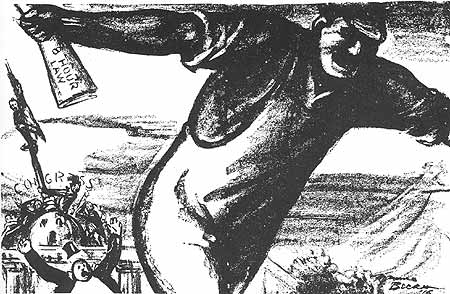talking history | syllabi | students | teachers | puzzle | about us
Eight hours for what we will!
Working people agitated for several decades, beginning most actively in the 1880s, for laws that would limit the standard work day to eight hours. This “eight-hour day” movement achieved a major victory when Congress passed the Adamson Act in 1916. The Adamson Act specified an eight-hour workday (with additional pay for overtime labor) for railroad workers, marking the first time that federal law regulated the hours of workers in private companies. In this 1916 illustration, which appeared in the radical monthly The Masses, Maurice Becker celebrated the passage of the Adamson Act, which, along with other labor reforms passed in this era, reflected the growing power of the AFL and the mass insurgencies by the Socialist party, the International Workers of the World (IWW), and other radical unions.

Source: Maurice Becker, The Masses, November 1916—Prints and Photographs Division, Library of Congress.
